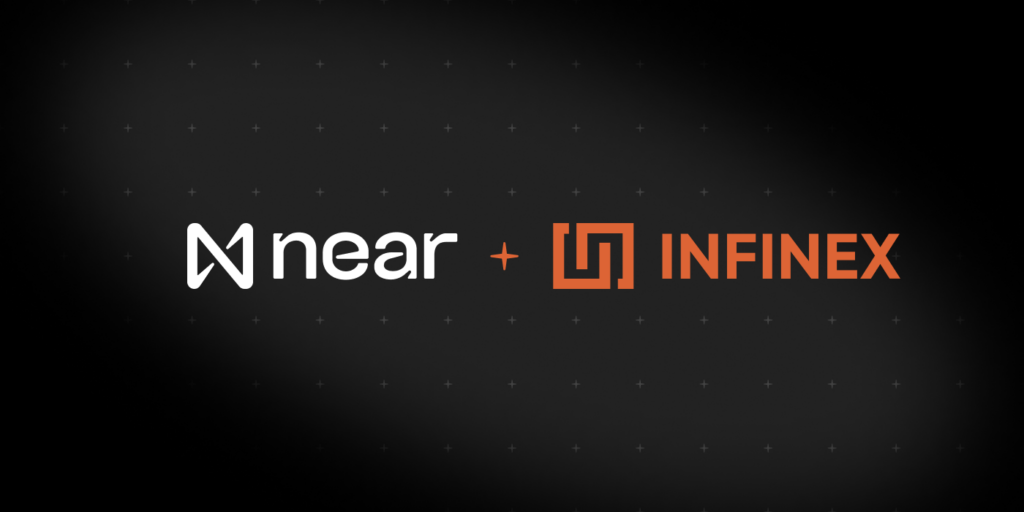The Rainbow Bridge Is Live
Today the NEAR team is excited to announce that the Rainbow Bridge is live and ERC-20 tokens can now bridge to the NEAR blockchain and back to Ethereum.

In today’s blockchain landscape, many protocols and applications are increasingly going multi-chain. This allows developers and users to take advantage of the assets, composability, and community of Ethereum, as well as the higher throughput, lower fees, and shorter confirmation times of next-gen chains like NEAR Protocol.
Using the Rainbow Bridge today, developers can utilize Ethereum assets on NEAR, and NEAR assets on Ethereum. Soon, they will be able to access any application state from either chain, and eventually, any chain. Users bridging fungible tokens to NEAR can take advantage of NEAR’s one-to-two second transaction times, low transaction fees usually under one cent, and comparably low bridge transfer fees.
Innovation across the decentralized finance (DeFi) and non-fungible token (NFT) spaces has increased demand on the Ethereum network and escalated transaction fees to record-high levels. The Rainbow Bridge allows users to seamlessly migrate assets to NEAR’s developer-friendly and low-cost platform, circumventing high gas fees without compromising on speed.
Current Ethereum users without a NEAR account can easily onboard to NEAR using the NEAR Faucet for Ethereum users, hosted by Paras, and MetaMask. Simply by logging into MetaMask and proving that their account has a balance higher than 0.05 ETH, anyone can claim a NEAR account and start using the Rainbow Bridge right away.
The industry’s biggest tokens are now on NEAR
The first phase of the Rainbow Bridge opens the gates for assets to flow freely between NEAR and Ethereum blockchains while enabling users to bridge any ERC-20 token now. The following popular tokens with common ERC-20 functionality will now be able to interoperate with NEAR, including but not limited to:
- Stablecoins like USDT (Tether), DAI, and TUSD
- Wrapped assets like WBTC and WETH
- DEX tokens like UNI and 1INCH
- Lending tokens like AAVE and COMP
- Service company tokens like HT (Huobi) and CRO (Crypto.com)
Users can send these ERC-20 assets directly from MetaMask or other Web3 wallets to NEAR wallets and apps, and vice versa.
Check out the dashboard with bridged assets in almost real time powered by Dune Analytics.
Inside the Rainbow Bridge
The Rainbow Bridge is a trustless, permissionless, and generic protocol for connecting blockchains. The bridge protocol removes the need to trust anyone except the security of the connected chains. Anyone can deploy a new bridge, use an existing bridge, or join the maintenance of an existing bridge without getting approval from anyone else.
The Rainbow Bridge is also generic in that it allows any information that is cryptographically provable on NEAR to be usable in Ethereum contracts and vice versa – including the ability to read the state and schedule calls with callbacks on the other chain. This means, for example, that a user can vote with their ETH balance in a NEAR DAO without sending a transaction on Ethereum.
The nature of the Rainbow Bridge remains fully decentralized and adaptable to any future protocol changes on either side. For more details about the architecture of the Rainbow Bridge, read the technical deep dive here.
How the Rainbow Bridge Works
As with the rest of the development experience on the NEAR platform, the bridge is built to be accessible and easy for all users, thanks to an intuitive design and the ETH Faucet for onboarding directly from MetaMask. (See the demo video to watch the Rainbow Bridge in action.) The cost and speed of using the Rainbow Bridge is mostly dependent on the current costs and speed of using the Ethereum network itself.
Once on NEAR, transactions will confirm in 1-2 seconds and cost under one cent in most cases. Since the Bridge requires transactions on Ethereum for NEAR <> Ethereum, the following costs are expected. Sending assets from Ethereum to NEAR takes about six minutes (20 blocks) and for ERC-20 costs about $10 on average. Sending assets from NEAR back to Ethereum currently takes a maximum of sixteen hours (due to Ethereum finality times) and costs around $60 (due to ETH gas costs and at current ETH price). These costs and speeds will improve in the near future.
The Rainbow Bridge launch marks an important first step in NEAR’s interoperability roadmap. Because the Rainbow Bridge is a generic protocol for communication between smart contract chains, it can be tuned to work with other chains and open up further combination possibilities. Since NEAR offers faster and cheaper transactions, it may be favorable for users of other chains to interact with Ethereum assets on NEAR, rather than bridging directly to Ethereum.
The next major step in NEAR’s interoperability roadmap will be the Ethereum Virtual Machine (EVM), which will launch in Q2 of 2021. EVM support will provide a fully compatible environment for developers to launch existing Ethereum code on NEAR.
Try the Rainbow Bridge Today
Users who bridge to NEAR can use Pulse, a stablecoin-denominated prediction markets platform powered by Flux Protocol; Paras, an NFT trading platform for digital cards; and Ref.Finance, an experimental community-built AMM that allows for swaps between any bridged tokens.
The Rainbow Bridge is available to everyone and does not require special permission to deploy, maintain, or use. To start transferring ERC-20 tokens and experience the high-speed, low-cost advantages of NEAR now…
—
If you’re a developer who wants to see what building on NEAR is all about, check out the NEAR docs to get started. Join the NEAR community via our Discord or Telegram channels and don’t forget to follow us on Twitter.
All product and company names herein may be trademarks of their registered owners.
Disclaimer: This article is provided for informational purposes only. It is not intended to be used as legal, tax, investment, financial, or other advice.
Share this:
Join the community:
Follow NEAR:
More posts from our blog




